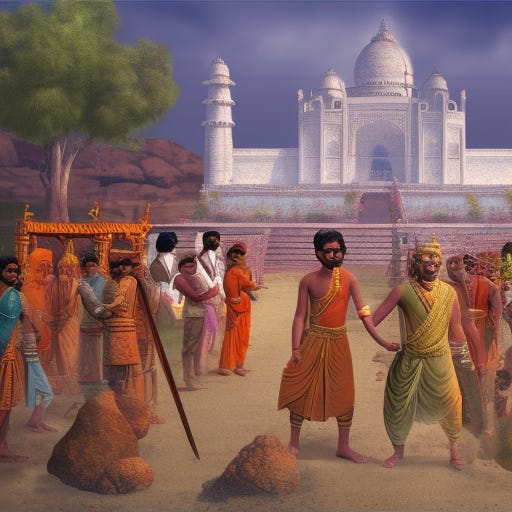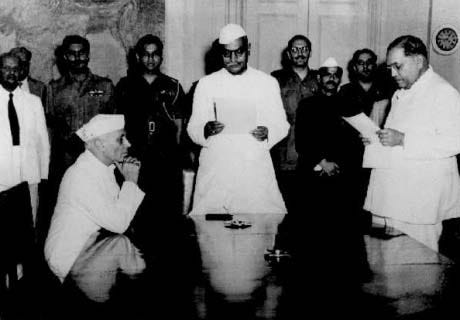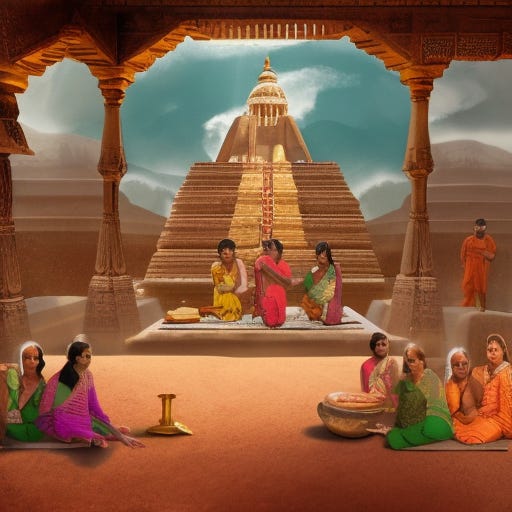"Breaking the Chains of Caste: Exploring Solutions for Abolishing Caste System in India"
The debate over caste-based policies in India revolves around their impact on social justice, meritocracy, and national unity, with the need for an alternative solution.
Introduction
The Caste System is an ancient social hierarchy in India that divides people into various groups based on their birth, occupation, and social status. It is a rigid and hierarchical system that has been in place for centuries and has had a profound impact on Indian society. No doubt, religions like Islam and Sikhism regard all their followers as “equal”, yet the fact remains that the tag of caste continues to be there not only from a social or occupational perspective but also from a legal standpoint in terms of reservation for Scheduled Castes (SC)/ Scheduled Tribes (ST)/ Other Backward Classes (OBC). While some argue that the caste system is a crucial part of Indian culture and identity, others argue that it is a discriminatory and oppressive system that needs to be abolished. In this essay, we attempt to examine both sides of the debate and, more importantly, provide a balanced and equitable roadmap forward that can be adopted and implemented in India’s pluralist, democratic polity, in absence of an omnibus scrapping/ criminalizing of the caste system.
Points For Abolishing the Caste System
The caste system has been a deeply entrenched part of Indian society for centuries, perpetuating discrimination, inequality, and social exclusion. Despite legal efforts to address it, the caste system continues to exist, even flourish, in various forms, affecting the lives of millions of people. Abolishing the caste system some argue would promote greater social, economic, and political equality, and help create a more just and inclusive society. Here are a few points in favour of abolishing, lock stock and barrel, the caste system in India.
Promoting social cohesion: The caste system has created deep divisions within Indian society, and abolishing it would help promote social cohesion and integration. This would foster a sense of community and collective identity, based on shared values and aspirations, rather than caste-based identities.
Creating a merit-based society: The caste system perpetuates inequality and discrimination, with certain castes enjoying greater privileges and opportunities than others. Abolishing the caste system would create a merit-based society, where people are judged on their abilities and achievements, rather than their caste or social status.
Ensuring equal access to opportunities: The caste system has led to unequal access to opportunities in education, employment, and other spheres of life. Abolishing the caste system would ensure equal access to opportunities for all, regardless of their caste or social status.
Eliminating caste-based discrimination: The caste system has been the root cause of caste-based discrimination, which continues to affect the lives of millions of people in India. Abolishing the caste system would help eliminate caste-based discrimination and ensure that all individuals are treated with dignity and respect.
Promoting human rights and dignity: The caste system violates the fundamental human rights and dignity of individuals, by denying them equal treatment and opportunities. Abolishing the caste system would help promote human rights and dignity, and ensure that all individuals are treated as equal members of society.
To summarize, abolishing the caste system would, at least in theory, if not in practice, help create a more just and inclusive society, where all individuals are treated with dignity and respect, and have equal opportunities to succeed and work towards their self-actualisation. While it may be a long and challenging process, it is essential for building a better future for India.
Points Against Abolishing Laws based on caste, including Reservation
The reservation system in India, which provides quotas for Scheduled Castes (SCs), Scheduled Tribes (STs), and Other Backward Classes (OBCs), is a constitutional provision aimed at ensuring social justice and equality. The system was first introduced in the Indian Constitution in 1950 under Article 15(4) and 16(4), and was meant to be a temporary measure to uplift the marginalized and disadvantaged sections of society.
The historical perspective of the reservation system dates back to the British colonial period, when they introduced separate electorates for SCs to ensure their representation in the political system. After Independence, the Indian government recognized the need for affirmative action to uplift the SCs, who had suffered from centuries of discrimination and oppression under the caste system. The reservation system was seen as a way to provide them with opportunities for education and employment, and to address the historical injustices they had faced for thousands of years.
The reservation system was not meant to be a permanent feature, but was initially intended to be phased out after a period of ten years. However, it has been extended repeatedly, with the latest extension being in 2020, which extended the reservation for SCs and STs in the Parliament and State Assemblies for another 10 years.
Arguments in favour of continuing with the reservation system include the need to address historical injustices and provide opportunities for social mobility to those who have been marginalized for centuries. It is argued that without affirmative action, the marginalized communities would continue to be excluded from mainstream society and denied access to education, employment, and other opportunities.
The reservation system has also been defended as a means of promoting diversity and representation in the political system and other spheres of society. It is argued that the reservation system has led to increased political participation and representation of SCs in India, and has helped to create a more diverse and inclusive society.
Furthermore, the reservation system has been seen as a necessary measure to ensure that the formerly “untouchables” or members of the Scheduled Castes are protected from discrimination and violence. For instance, the Protection of Civil Rights Act, 1955 provides for punishment for the offence of practicing of untouchability and other similar customs. Similarly, the Scheduled Castes and Scheduled Tribes (Prevention of Atrocities) Act, 1989 provides for the prevention of atrocities against members of SCs and STs. It defines various offenses, such as assault, sexual exploitation, and denial of access to public places, as punishable under the law.
Jettisoning the very concept of caste in the Indian State would mean rendering such laws inoperative and non-existent qua the vulnerable sections of the society.
To summarise the argument, the reservation system for Scheduled Castes in India has a constitutional and historical perspective aimed at ensuring social justice and equality. While it was initially meant to be a temporary measure, it has been extended repeatedly, with arguments in favour of continuing with the system, including the need to address historical injustices, promote diversity and representation, and protect the marginalized communities from discrimination and violence.
Comparison with western countries
Social and economic hierarchies exist in many societies around the world, including in Western countries. However, it is important to note that these hierarchies may operate differently from India’s caste system, which is a system of social stratification that is deeply rooted in religious and cultural practices.
In Western societies, social and economic hierarchies are often based on factors such as wealth, education, occupation, and social status. While these factors can certainly impact one’s opportunities and social mobility, they are not typically tied to one’s birth or family lineage in the way that caste is in India.
Furthermore, while Western societies have certainly struggled with issues of discrimination and inequality, there are typically legal and social protections in place to prevent discrimination on the basis of factors such as race, gender, religion, and sexual orientation. In India, on the other hand, discrimination based on caste is still pervasive, despite legal efforts to abolish or even criminalize such discrimination.
In summary, while social and economic hierarchies do exist in many societies, including in Western countries, they are often different in nature and operation from India’s caste system. The caste system in India is a unique form of social stratification that is deeply rooted in cultural and religious practices, and persists despite efforts to eliminate it. Ironically, there are serious allegations that certain “upper-caste” Hindus in the Silicon Valley have very subtly introduced this pernicious practice even there.
Dr. B.R. Ambedkar’s Views on Caste
Dr. B.R. Ambedkar was a prominent Indian social reformer, jurist, and political leader who fought for the rights of Dalits or lower-caste individuals. He was also the Chairman of the Drafting Committee of the Constitution in the Constituent Assembly. He was a strong advocate for the abolition of the caste system in India and his book “Annihilation of Caste” is a powerful critique of the caste system and its impact on Indian society.
In his book, Ambedkar argues that the caste system is not just a social hierarchy but a system of graded inequality that denies basic human rights to lower-caste individuals. He criticizes the ancient Indian scriptures and their role in perpetuating the caste system. Ambedkar argues that the caste system has been used to justify social and economic inequality and that it is incompatible with the principles of democracy and social justice.
Ambedkar also criticizes the Indian political system for its failure to address the issue of caste-based discrimination. He argues that the Indian Constitution, while recognizing the importance of abolishing the caste system, has not gone far enough to address the issue. Ambedkar calls for a radical restructuring of Indian society and politics to create a more equal and just society.
Many scholars argue that Ambedkar’s perspective on the abolition of the caste system is perhaps rooted in his own experiences as a “lower-caste” individual. He believed that the caste system was a significant obstacle to the progress and development of lower-caste individuals in Indian society. He argued that the abolition of the caste system was essential for the creation of a truly democratic and egalitarian society.
Overall, Ambedkar’s perspective on the abolition of the caste system is a powerful critique of the caste system and its impact on Indian society. His ideas continue to be relevant today, and his advocacy for the rights of lower-caste individuals has had a profound impact on Indian society and politics. It is, however, a little bit ironical the enabling provisions for caste-based reservation found its way into the Constitution of India, under his stewardship.
What measures can be taken from this point onwards?
The caste system in India is a complex issue with deep historical and cultural roots. Addressing the ill-effects of the caste system requires a multi-faceted approach that involves not only policy and constitutional measures but also social and cultural changes. Here are some possible policy and constitutional measures that the government can take to minimize the ill-effects of the caste system, while leveraging upon its positive features:
Affirmative action: The Indian government has implemented affirmative action policies, such as reservations in education and employment, to help uplift marginalized communities, including Dalits (formerly known as “untouchables”). The government can continue to expand these policies to ensure greater representation of marginalized communities in all sectors of society. However, the proposal to exclude the economically well-off SCs or the “creamy layer” among such castes from the benefits of reservation is an aspect that needs to be discussed and debated in India’s public space.
Strengthen anti-discrimination laws: The government can strengthen anti-discrimination laws to ensure that individuals are not discriminated against on the basis of caste, religion, gender, or any other identity marker. These laws should be enforced strictly to ensure that perpetrators are held accountable for their actions.
Increase education and awareness: Education and awareness campaigns can help raise awareness about the negative effects of the caste system and promote positive attitudes towards marginalized communities. Education should also include the history and evolution of the caste system and its impact on society.
Encourage inter-caste marriages: Inter-caste marriages can help break down the barriers between different castes and promote social integration. The government can provide incentives for inter-caste marriages and promote them through public awareness campaigns.
Promote the positive aspects of caste: While the caste system has many negative aspects, there are also positive aspects, such as the sense of community and mutual support that exists within caste groups. The government can promote these positive aspects while discouraging the negative ones. For example, the government can encourage the formation of caste-based self-help groups to provide support and assistance to marginalized communities while discouraging practices such as caste-based discrimination and violence.
Declaring “No Caste”: Just as increasing number of official documents, including he census forms allow a person to report “atheist” under the column of religion, perhaps a similar provision can be made in respect of “caste”. In other words, one should have the liberty answering the caste column with “No Caste” or “Not willing to divulge”. This is perhaps a totally new suggestion and needs further examination, especially when many states like Bihar are vehemently demanding “caste-census”.
Conclusion
To sum up, addressing the ill-effects of the caste system in India requires a multi-pronged approach that involves not only policy and constitutional measures but also social and cultural changes. The government must continue to implement affirmative action policies, strengthen anti-discrimination laws, increase education and awareness, encourage inter-caste marriages, and promote the positive aspects of caste while discouraging the negative ones. However, it is important to note that the caste system is a deeply ingrained aspect of Indian society, and eradicating it completely will require sustained effort and commitment from all levels of society. Ultimately, the goal must be to create an egalitarian society that is free from discrimination and where all individuals are able to achieve their full potential, regardless of their caste or any other identity marker. If we all work together sincerely and with persistence, this truly casteless society may not be a distant dream.
_______________________________________________
The author superannuated as Special Chief Secretary, Punjab in July, 2021, after nearly 37 years of service in the IAS.
He can be reached on kbs.sidhu@gmail.com





